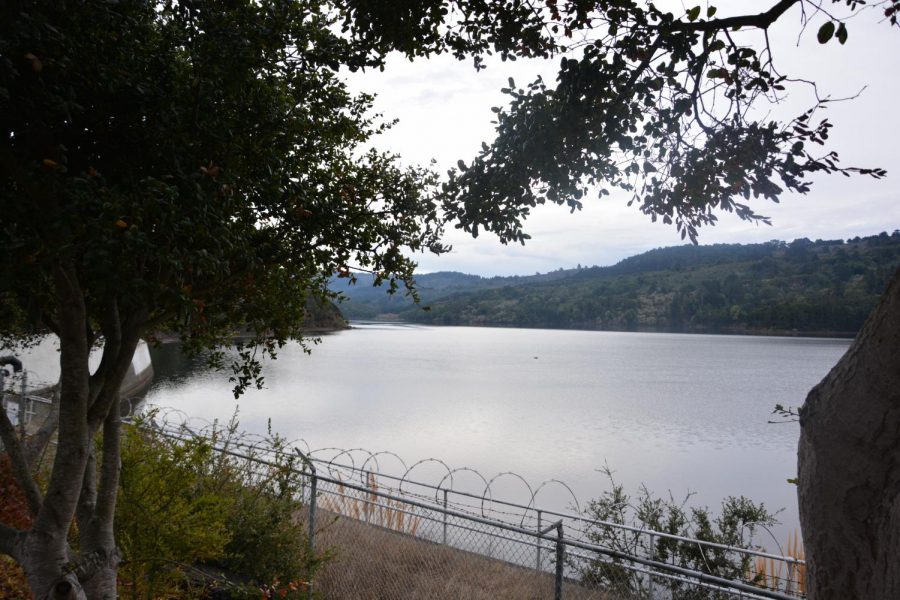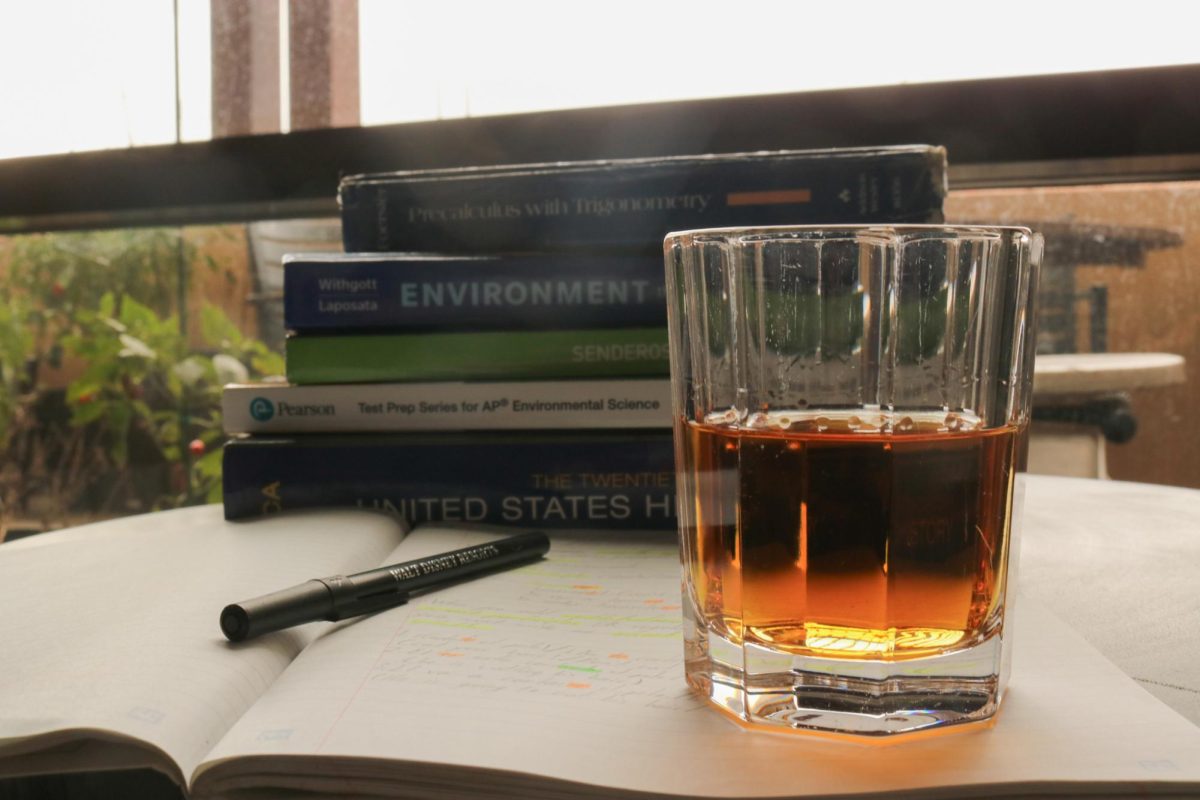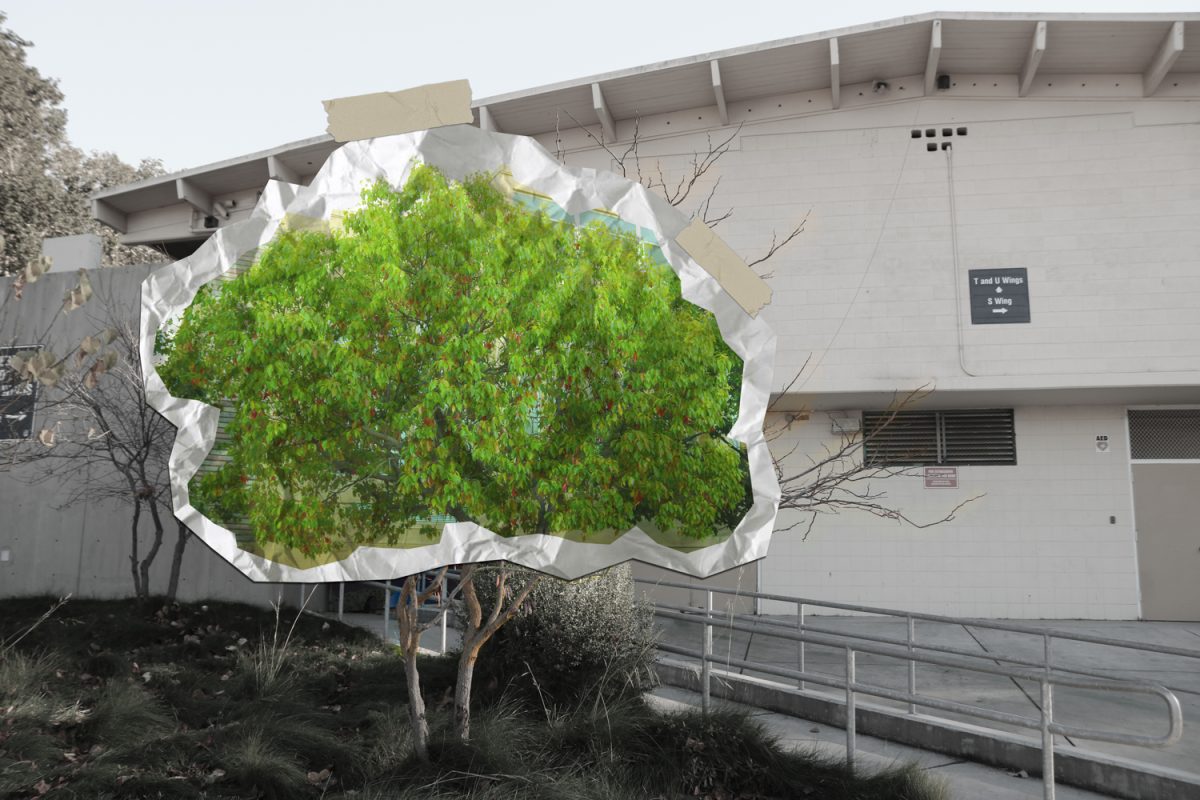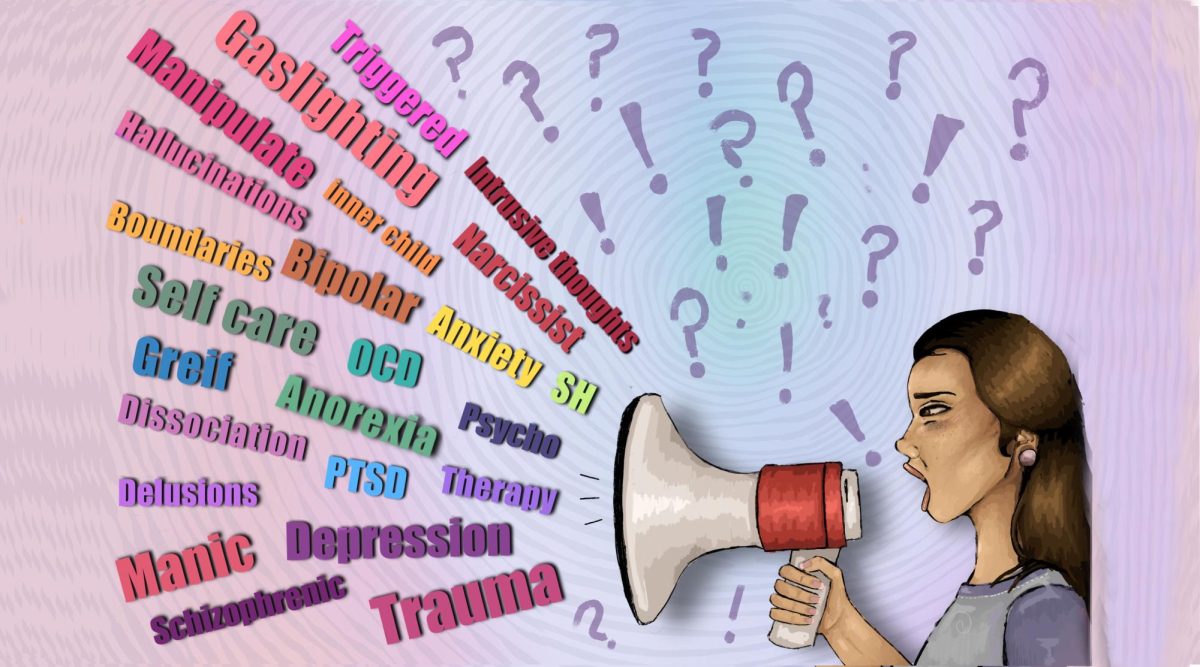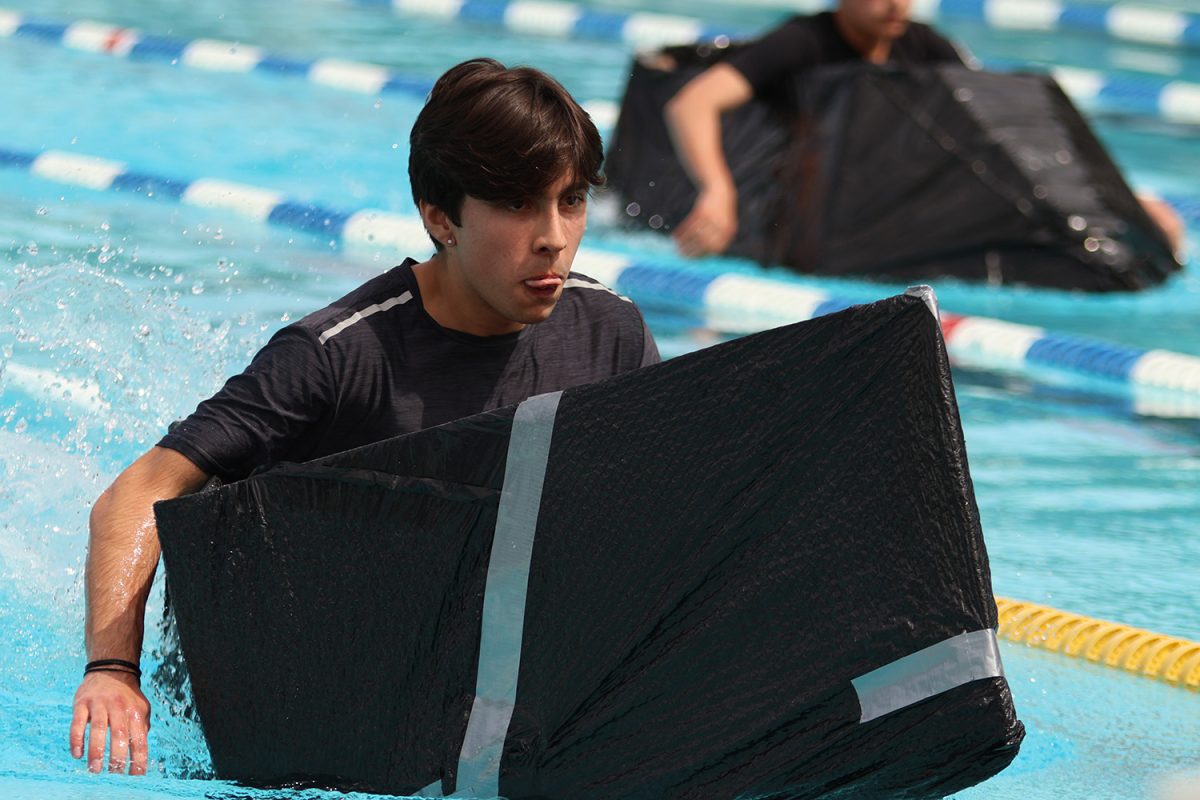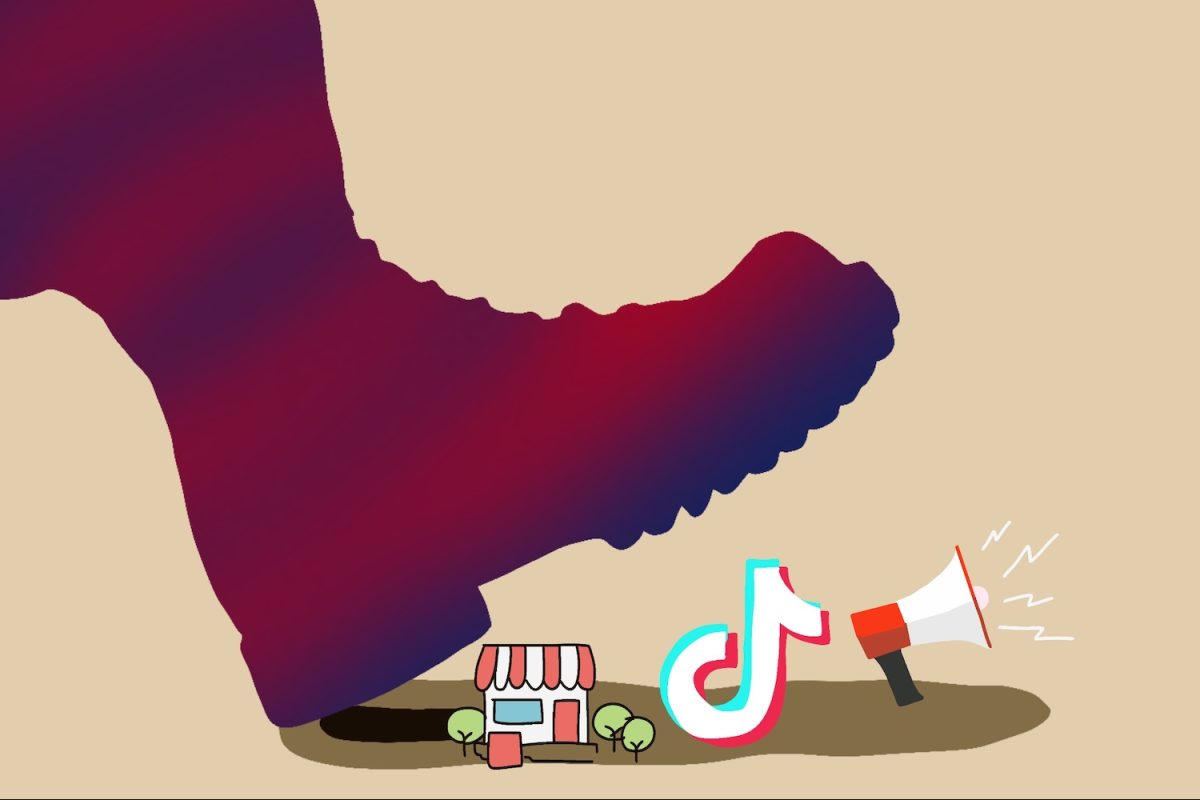It’s Oct. 17, 1989.
The Giants and A’s are about to play game three of the World Series. Televisions and radio stations across the country are tuning in to the game.
Jaime Garcia, a Carlmont social studies teacher, is in the Mission District of San Francisco. Two to three-story Victorian houses line the street on both sides.
“Everybody was over at my house. I had the big living room and the big TV, so some of my buddies came over with my brother and my dad to watch the game,” Garcia said.
Before the game starts, Garcia needs to take out the trash.
“My mom goes, ‘how many times did I tell you to take out the garbage?’ I take the pile of garbage and go to the back of the house into the yard,” Garcia said.
From the yard, the backs of the homes stand like giants. The sounds of bustling traffic and car horns from 24th St. are carried into the yard.
“I’m putting away the garbage. I’m already feeling something bizarre, and the momentum is building right where I feel tremendous shaking like I never saw before. I remember something similar from when I was a kid, but this one is absolutely much, much worse,” Garcia said.
Geographically, cracks in the Earth’s crust, called faults, divide the world into tectonic plates. California sits on two sections, the Pacific Plate and the North American Plate. The North American Plate moves northwest about 2 inches per year, according to the U.S Geological Survey.
The two plates build up stress as they grind against each other. When the plates slip and release that stress, an earthquake occurs. Energy in the form of seismic waves travels through the ground, causing it to shake. Damaging earthquakes can happen at any time.
“All the Victorian homes in my backyard were really swaying. It felt like forever. I don’t know how long it was, but it’s an eternity during an earthquake,” Garcia said.
The ground shook for only 15 seconds, and the earthquake had a magnitude of 6.9, according to the Encyclopedia Britannica.
How do Seismographs Work? by Nikhil Vyas
“I was expecting the houses to fall. I was expecting the ground to break open. When I thought, ‘these homes are not going to take any more of this,’ it was over,” Garcia said.
The Victorian homes in his neighborhood had survived this earthquake, and Garcia went back inside to see how his family was doing.
“First, I checked to see if my mom was okay. She tries to get on the phone, but obviously, the phone doesn’t work since the electricity is out,” Garcia said.
There was still light outside, but darkness would soon dominate the horizon. Garcia and some of his family and friends went to the front of the house after the shaking stopped. The rest of the block was already in front of their homes.
They first checked for injuries, fire, and property damage. Of course, there was furniture scattered about the houses and some ripped drywall, but everybody was okay.
“Everyone was very caring and very cautious, and they wanted to make sure that everybody was safe. It was a great camaraderie of neighbors,” Garcia said.
Next, they went to the garage to turn off essential utilities. They shut off valves for gas, heat, and water. Gas lines can move during the earthquake, and any leak may cause a fire.
After the major earthquake in 1989, the U.S Geological Survey examined when and how the next earthquake could play out.
Based on the frequency of previous large earthquakes, seismologists predicted that the next major earthquake is likely to occur along the Hayward fault.
Therefore, scientists, geologists, and engineers analyzed the HayWired scenario, a hypothetical 7.0 magnitude earthquake along the Hayward fault. Their simulation considers the possibilities of aftershocks, additional shaking after the earthquake. Society’s dependence on water pipes, electricity cables, and the internet also played a role in the scenario.
Earthquakes on the Bay Area Fault Lines by Nikhil Vyas
In the video simulation, they estimate 800 deaths, 1,600 injuries, and $82 billion lost from just the shaking.
The 1989 earthquake canceled schools for about a week and postponed the World Series for 10 days. The next morning, the power finally came back on. Radio and television news revealed the extent of damage from the earthquake.
“You heard rumors of all the things that are happening, and that’s when it really hits your heart. Then, we got news on the radio of the Nimitz freeway,” Garcia said.
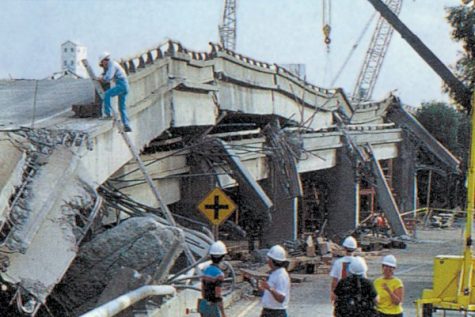
The Nimitz Freeway collapsed during the Loma Prieta Earthquake in 1989.
The Nimitz Freeway, also known as Interstate 880, was a double-decker freeway that went through the East Bay. A portion of the freeway in Oakland called the Cypress Pass collapsed. The structural failure killed 42 people and injured more.
Another major infrastructural disaster included the Bay Bridge, which connects San Francisco to Oakland. A portion of the upper deck fell onto the lower deck stopping traffic and impairing communication.
Likewise, many homes and small businesses in the Marina District also collapsed during the earthquake. While some houses are built down to bedrock, the soil in the Marina District is loose. Areas like that are called liquefaction zones, where buildings shake more violently and have a higher chance of collapsing.
Though the 1989 earthquake caught many in San Francisco off-guard, there are many things that average citizens can do to prepare for an earthquake to mitigate the damage and recovery time after the fact.
Before an emergency happens, it’s essential to have an emergency kit. Anyone could be at home, work, or in their car during an earthquake, so the Department of Homeland Security recommends having emergency supplies in all of those locations.
The Redwood Shores Fire Department has additional ways that people can stay safe during an Earthquake.
“Bolting your house structure to the foundation is one way to prevent building collapse, but it’s pretty costly. You can strap your water heater to the wall. In case of an earthquake, you can turn the water heater off, and then you have at least 40 gallons of water right there,” said Dave Thielman, a firefighter.
They also recommend using earthquake straps to secure dressers, televisions, and any other furniture that is likely to fall over or break.
Fire captain Julie Gardner said that during a strong earthquake, calls could overload the 911 system, so there may be a delay in response time. What’s worse is that emergency calls may not go through at all if cell coverage is lost.
A devastating earthquake can strike at any time; nobody can control that. However, the factor that communities can control is how prepared they are.
“It’s really important for everybody to be prepared, have their emergency kit, and make sure they can take care of themselves,” Gardner said.


